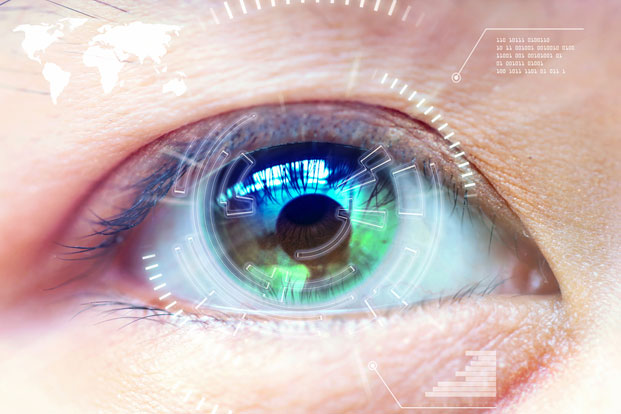LASIK eye surgery — everyone seems to be doing it. But should you?
We all have at least one friend or family member who has ditched contacts and glasses for a popular solution to poor eyesight: LASIK eye surgery. This laser procedure corrects poor vision by reshaping the cornea. And in many cases, the results are phenomenal.
Experts say that many who undergo the surgery end up with 20/25 vision afterward (or better). Further, more than 80 percent of people can see without contacts or glasses. And if you are just slightly nearsighted, you’ve got the best chance of success.
According to the Mayo Clinic, LASIK eye surgery, or laser-assisted in-situ keratomileusis, works by bending light rays in the eye so that they hit the retina in the correct place. It’s used for nearsightedness (myopia), farsightedness (hyperopia) and astigmatism.
The LASIK Process
While LASIK eye surgery sounds like a lengthy procedure, it’s not. In fact, it’s performed on an outpatient basis. And best of all, you shouldn’t feel pain because your eye will be numbed with eye drops. However, the experience of LASIK eye surgery can be a bit scary for some. This is mainly because an eyelid holder will be used to keep the eyes open so that you don’t blink. It’s often startling to have something so close to your eye and not be able to close your eyes to protect yourself.
After your eyes have been secured, a suction ring will be used to lift and flatten the cornea. In this process, you might feel pressure, but it won’t be too uncomfortable. The American Academy of Ophthalmology equates this to how it would feel if someone pressed a finger against your eyelid. You won’t be able to see clearly until this device is removed, which is normal.
After this step is complete, a laser or blade will be used to create a hinged flap in the cornea tissue. Next, a preprogrammed laser will reshape the tissue while you gaze at a small light. You won’t need stitches after this process is complete, and each eye takes just 10 to 15 minutes. (If you’re having both eyes done, the procedure will be complete in about a half an hour.)
One important thing to know is that you won’t be able to drive once the procedure is complete. So you’ll need someone to drive you home. You may also need to wear an eye shield to protect the eyes, especially at night. It’ll be important to follow this step so that you don’t accidentally irritate your eye in your sleep.
You’ll also be sent home with special eye drops to keep your eyes moist and to speed recovery. And you might need to skip work for a few days while your body recovers. This all depends on what your job entails and what your doctor feels is necessary.
Plus, you may have some after effects once the procedure is complete. According to the Federal Trade Commission (FTC), this may involve burning of the eyes for a few hours. And you might experience blurred vision for a day or two.
LASIK Risks
While this sounds like a quick and easy procedure, LASIK eye surgery doesn’t come without risks. The worst-case scenario is irreversible blindness or eye damage. This would happen if the laser malfunctions of if you don’t take to the surgery well in general. That said, this doesn’t happen very often, meaning that LASIK eye surgery is relatively safe overall.
There are risks when it comes to vision in general, post-LASIK. There is a chance that vision may worsen, and you still might need glasses or contacts. Plus, there’s also a chance that corrective eyewear may not improve your vision to the same extent that it did before. You also run the risk of experiencing interference in your vision. For example, you may notice glare, double vision or halos.
Another issue could be dry eye syndrome. This happens when your eyes don’t make tears in the way that they should. This may require eye drops on a regular basis, or you may need plugs. Further, you might need to undergo a “retreatment” or “enhancement” in which another surgery will be performed.
There are also health issues that may put you at risk for complications. Autoimmune disorders, like rheumatoid arthritis, may put you at risk. Dry eyes put you at risk because of the tendency for LASIK to exacerbate the problem. And hormone changes due to pregnancy or menopause may put you at risk. You’ll want to avoid this procedure if you have an eye condition like keratoconus, keratitis, uveitis, herpes simplex affecting the eye area, glaucoma, cataracts, eye injuries or lid disorders.
Your doctor may advise against surgery if your vision is good already or if you have big pupils and/or thin corneas. Further, certain sports that involve contact with the face may make you a poor candidate, and changes to the eye due to age may also play a part in your doctor’s recommendation.
If you do opt for the procedure, you’ll need to prepare. According to the Mayo Clinic, you’ll want to find out exactly how much the procedure is going to cost. Because it is an elective surgery, you probably can’t count on insurance to foot a portion of the bill. So you’ll need to plan for payment ahead of time.
The Mayo Clinic says that you’ll need to call it quits with the contacts a few weeks before having the procedure done (and wear your glasses instead). This is because contacts may affect the shape of the cornea, which could affect measurements. You’ll also want to avoid eye makeup and anything else that you put on your eyes the day of and the day before surgery. Follow doctor’s orders about any eye-cleaning procedures

Leave a Reply